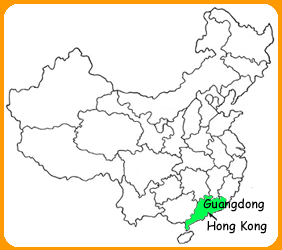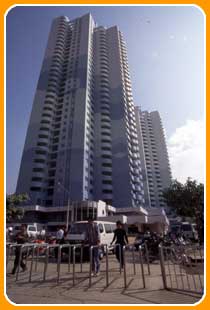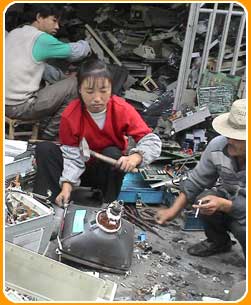 |
Guangdong Province is one of the new workshops of the world. Over five hundred companies are located in Guangdong, creating China's largest hi-tech industry belt. Thirty million people already work here, and every week thousands more arrive in search of work. |
Shenzhen, the boom town
| Shenzhen, across the river from Hong Kong in Guangdong province, has grown from a small town to an industrial hub. It is now home to seven million people and has the highest population density in China. Development is so fast that Shenzhen is nicknamed, "the city of overnight growth".
| Shenzhen is a magnet for foreign investment. Transnational companies like Microsoft, BP, Honda and General Electric are already based here. Chinese companies are making their own mark too, grabbing a share of the growing market within China itself. |
|
 |
|
|

© Sean Sprague/Panos Pictures |
What gives Shenzhen the edge?
As more companies move into the area, local suppliers of components and construction firms have moved in too. This way, companies can buy components more easily and cheaply, and the factories making components and building new factories and apartments get plenty of business. This win-win situation sparks off a 'multiplier' effect.
The downside to development
| Not everyone is sharing the benefits of the boom. Technology is replacing workers, leaving a growing number of unemployed. Many others live and work in extremely poor conditions. Click on the image to find out more. |

© Mark Henley/Panos Pictures |

© Basel Action Network |
Four hours from Shenzhen, an area called Guiyu has become an electronic junkyard for waste from the USA. This 'e-waste' is putting people and environment at great risk. Click on the icon to read the full story.
|
The UK also receives hazardous waste from the USA. Recently, two battered old ships carrying 122 tonnes of asbestos and old fuel docked at Teeside to be taken to the breaker's yard. More ships will follow despite loud protests from local residents in Hartlepool. At the same time, the UK produces around a million tonnes of e-waste a year. This could double by 2010. For many it is easier to buy a new computer or fridge than mend or upgrade an old one.
What do you think?
Decide on a scale of 1-10 whether you agree or disagree with these statements. 1 means you disagree strongly, 10 means you agree strongly.
- People in poorer countries deserve the same level of environmental protection as in rich countries.
- All exports of hazardous waste should be banned. Instead, the waste should be dumped in the country that produces it.
- Electronics companies should take responsibility for the waste and take it back.
- Electronics companies should phase out designs that use toxic materials.
- Electronics companies should design appliances that last!
There are now campaigns to recycle rather than dump some of our e-waste. Visit www.oxfam.org.uk/what_you_can_do/recycle/ to find out how you can help with Oxfam's campaign to recycle mobile phones, toner cartridges and computers to earn money for Oxfam's work around the world.





